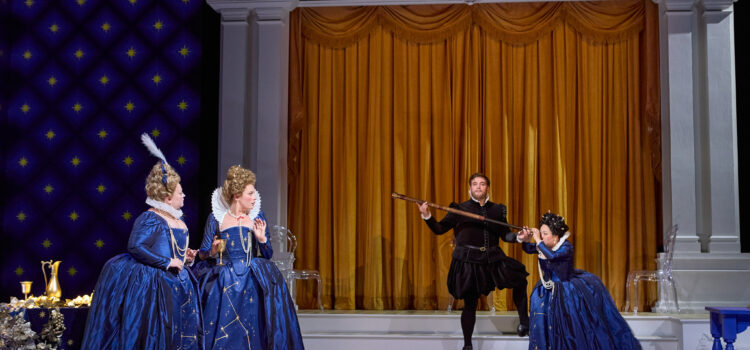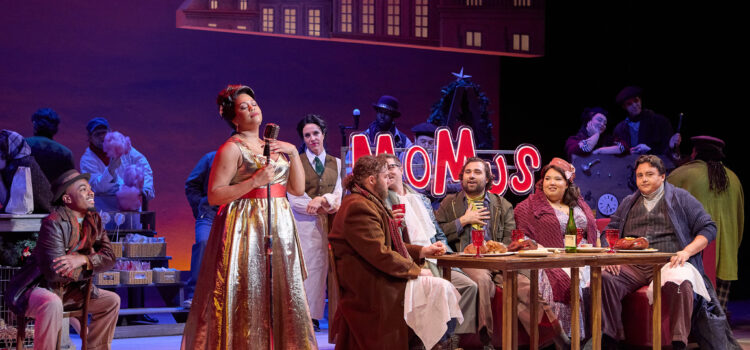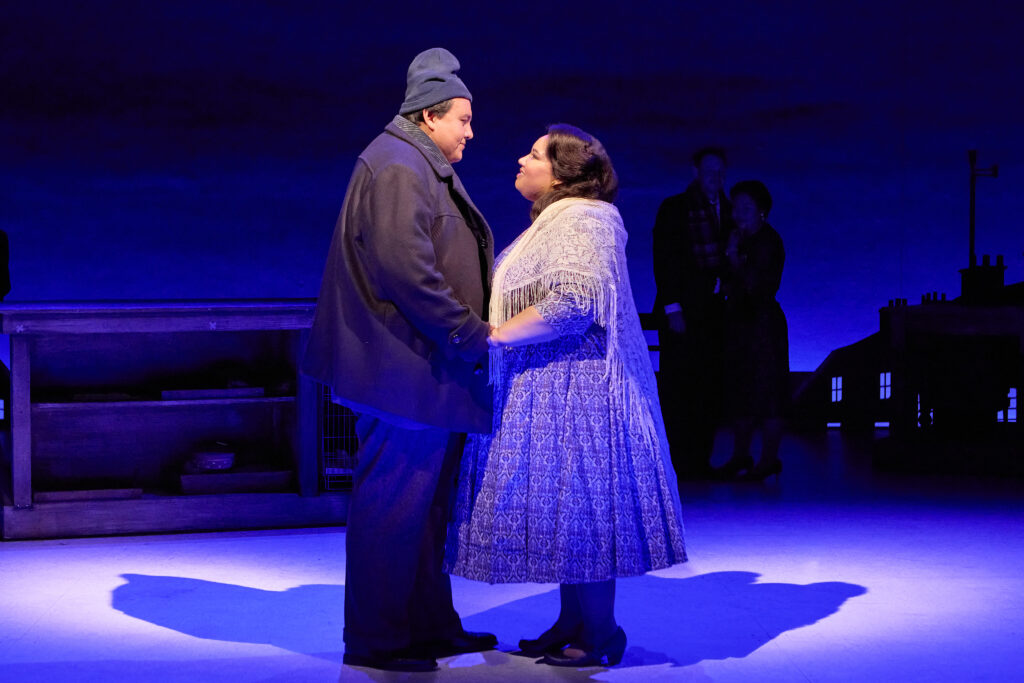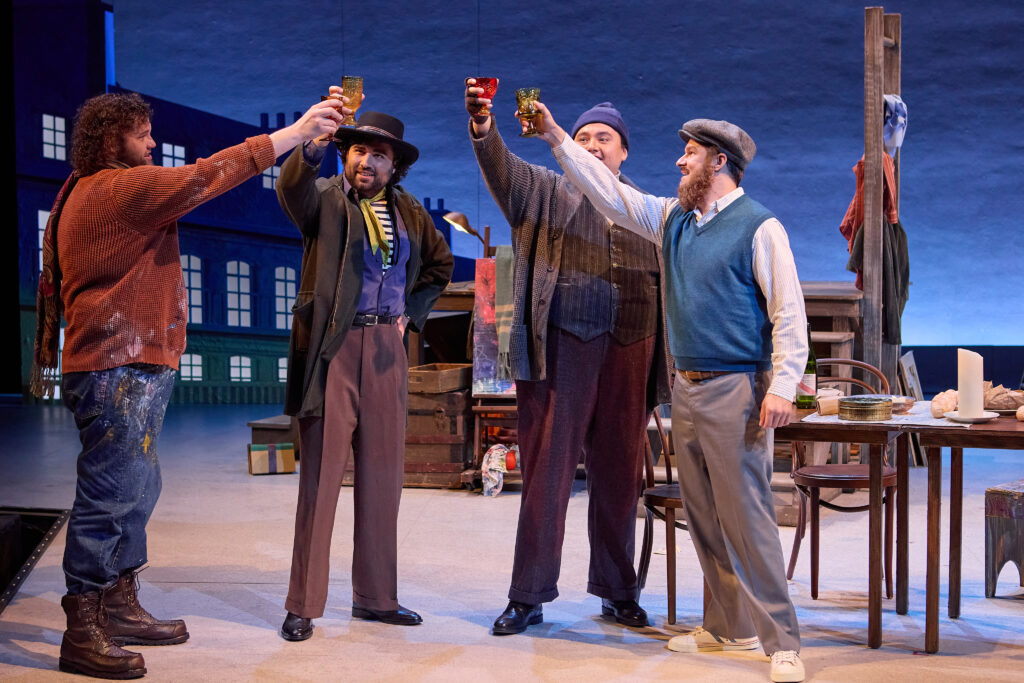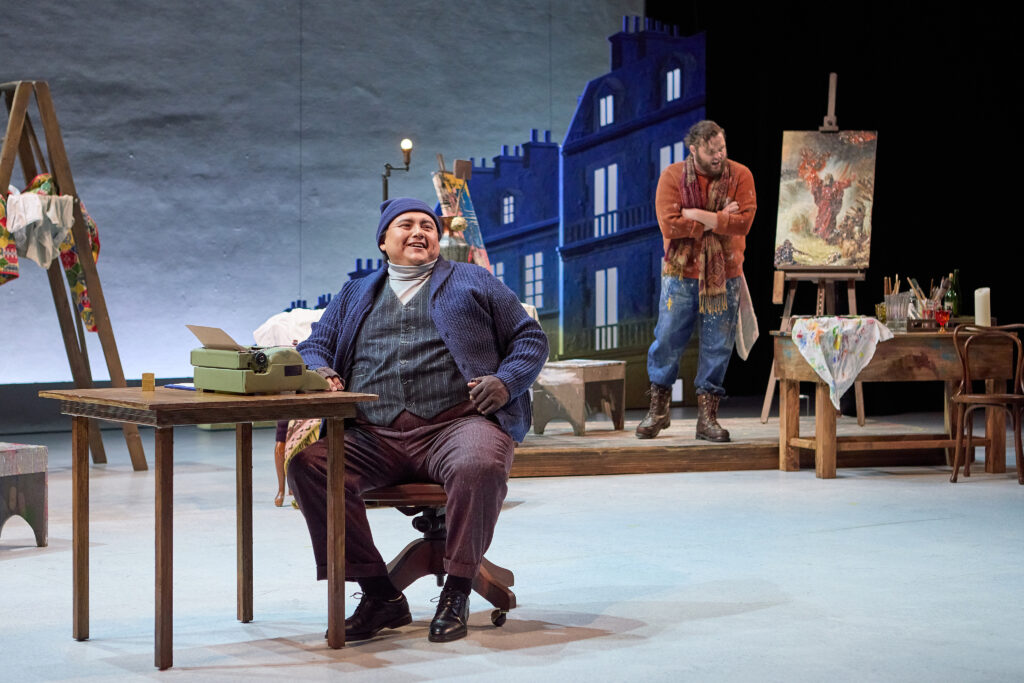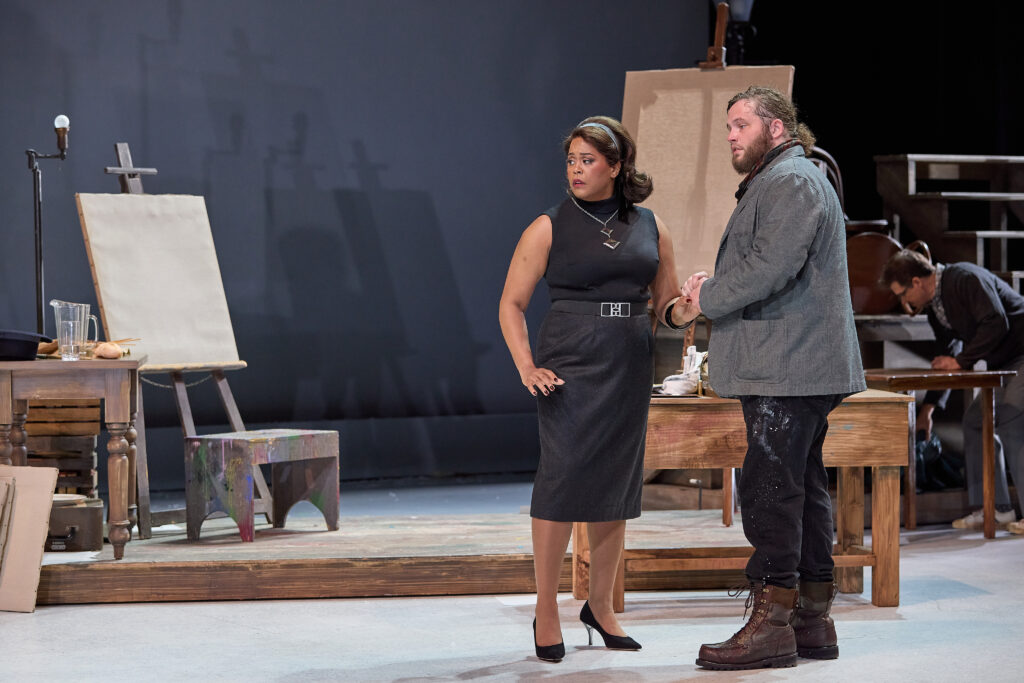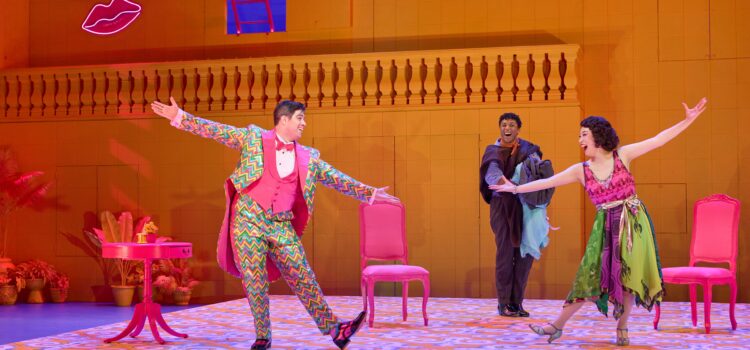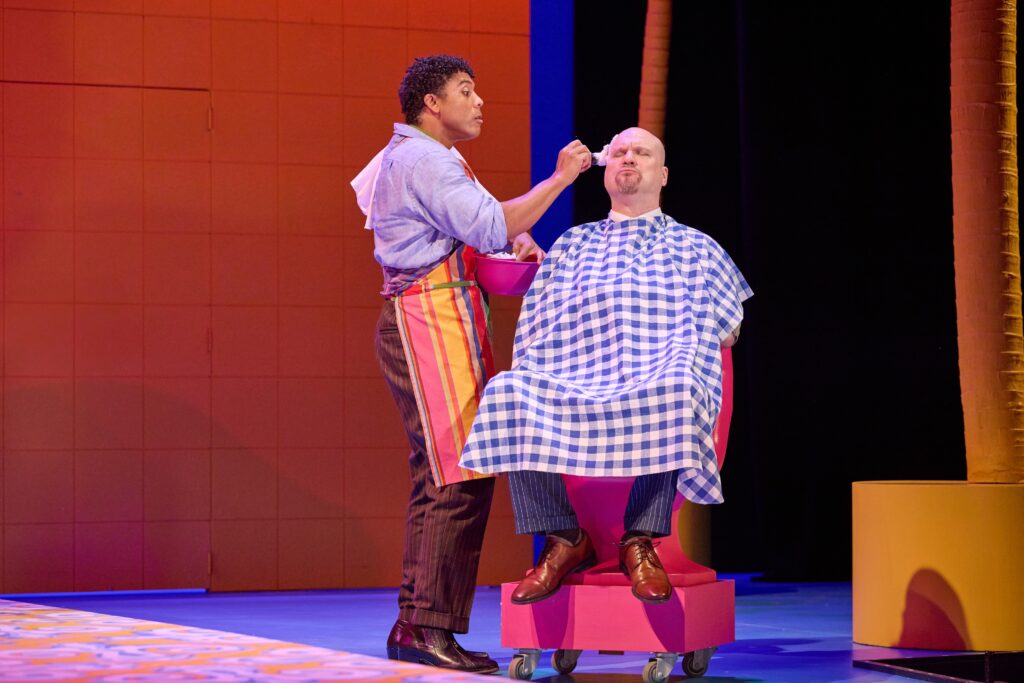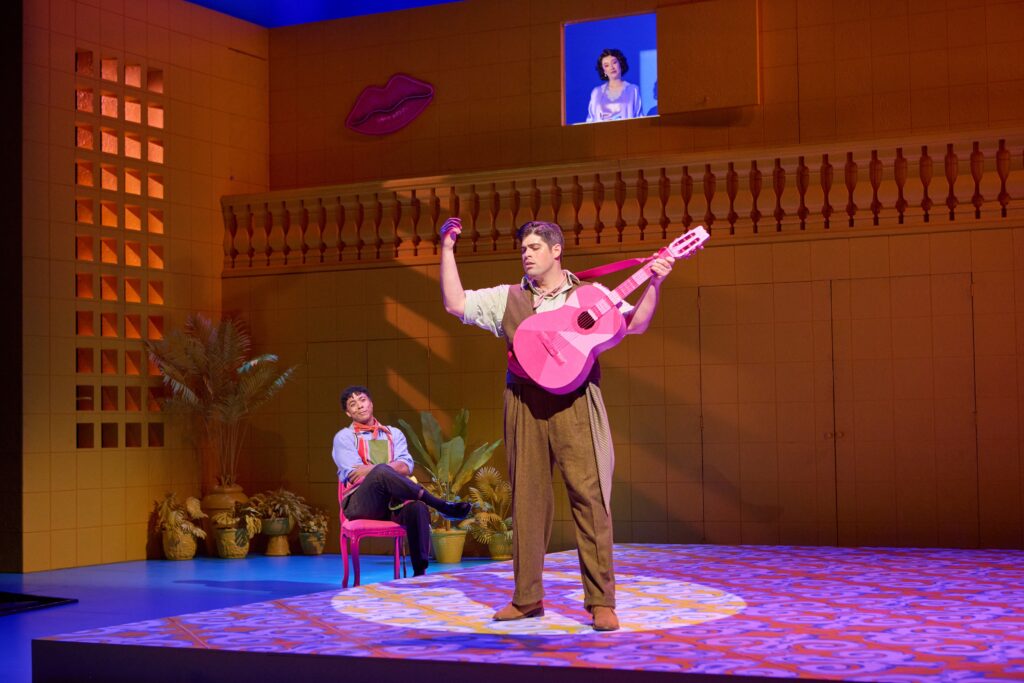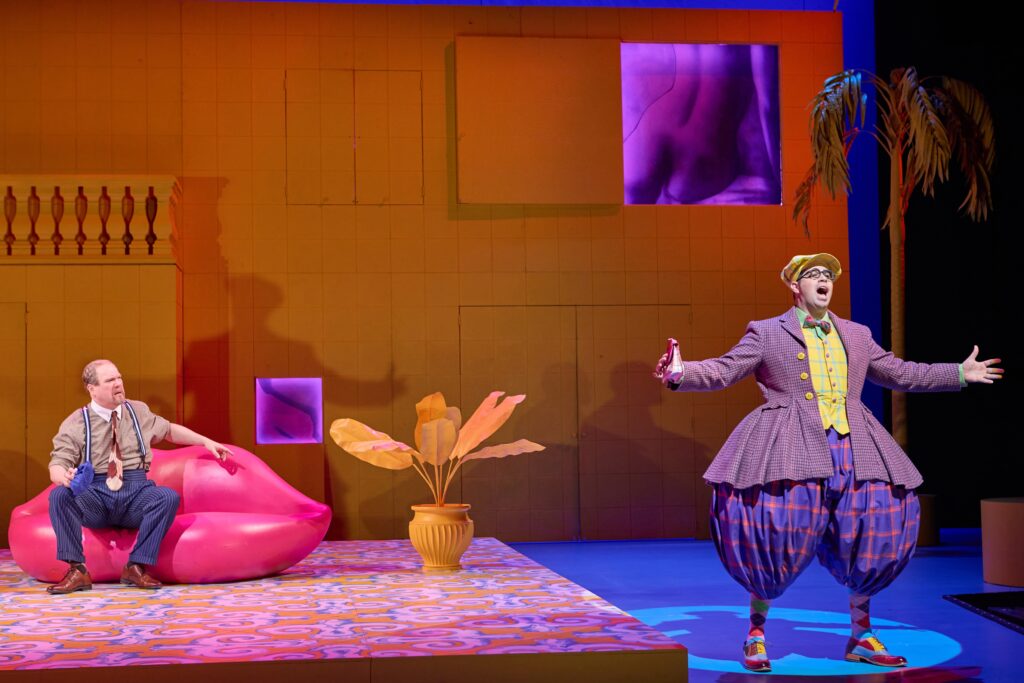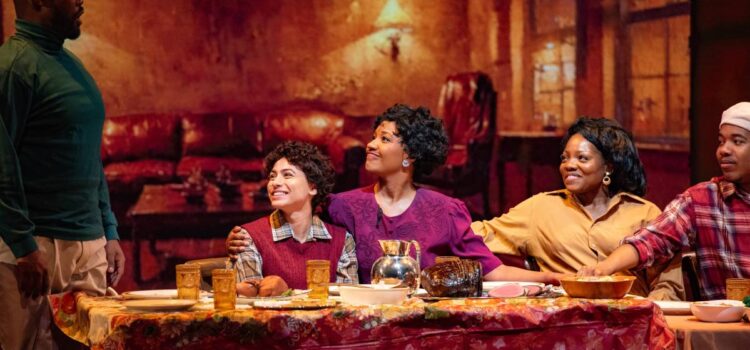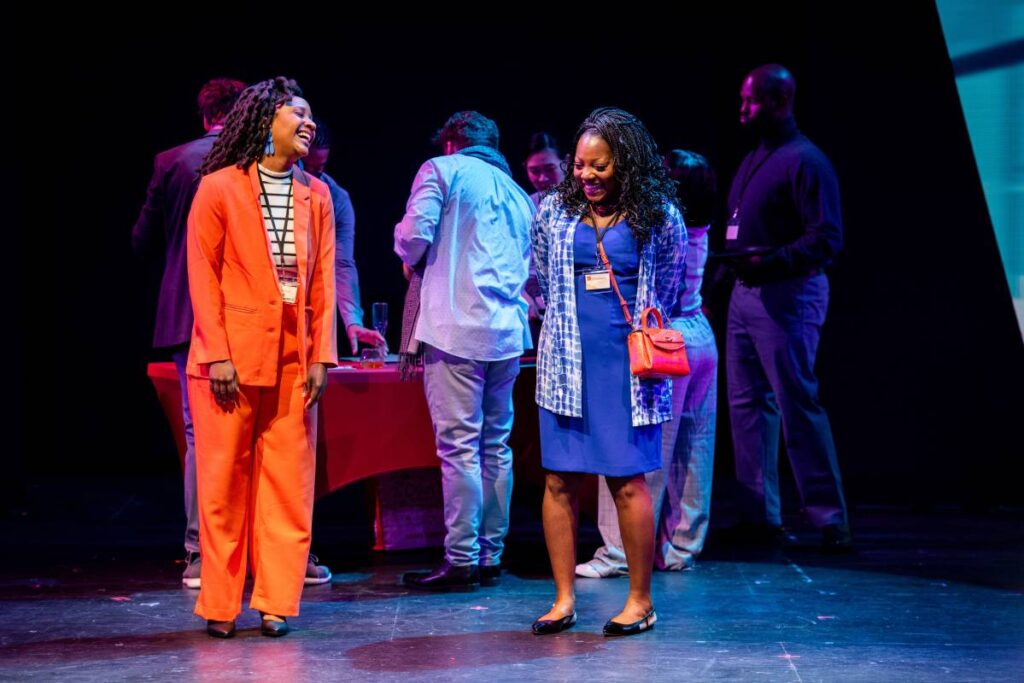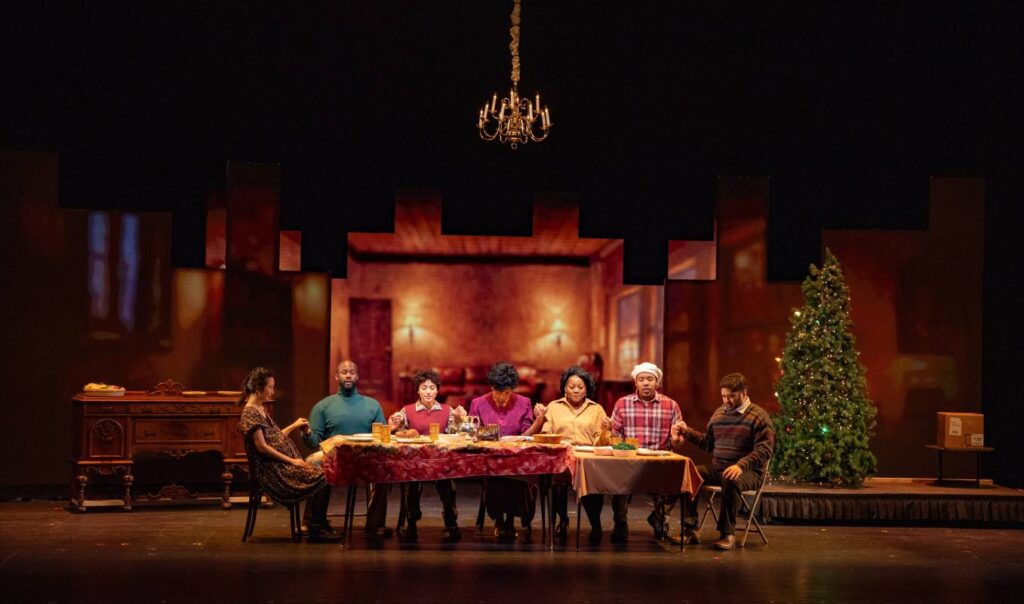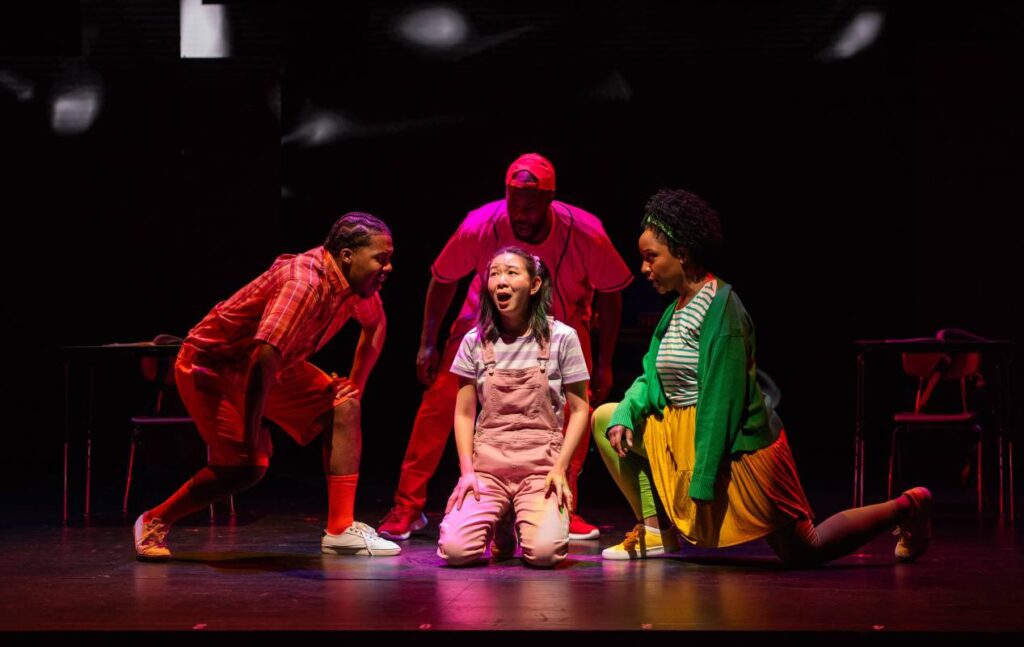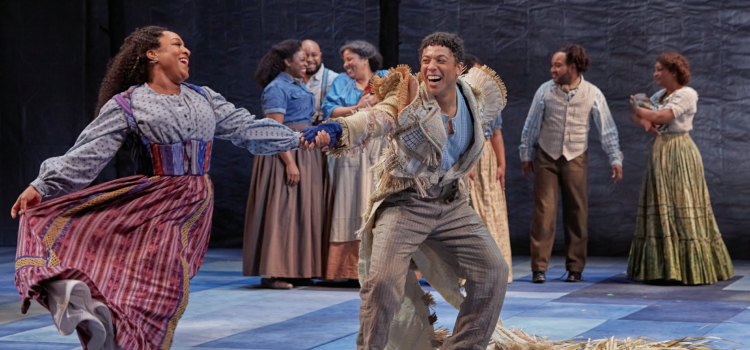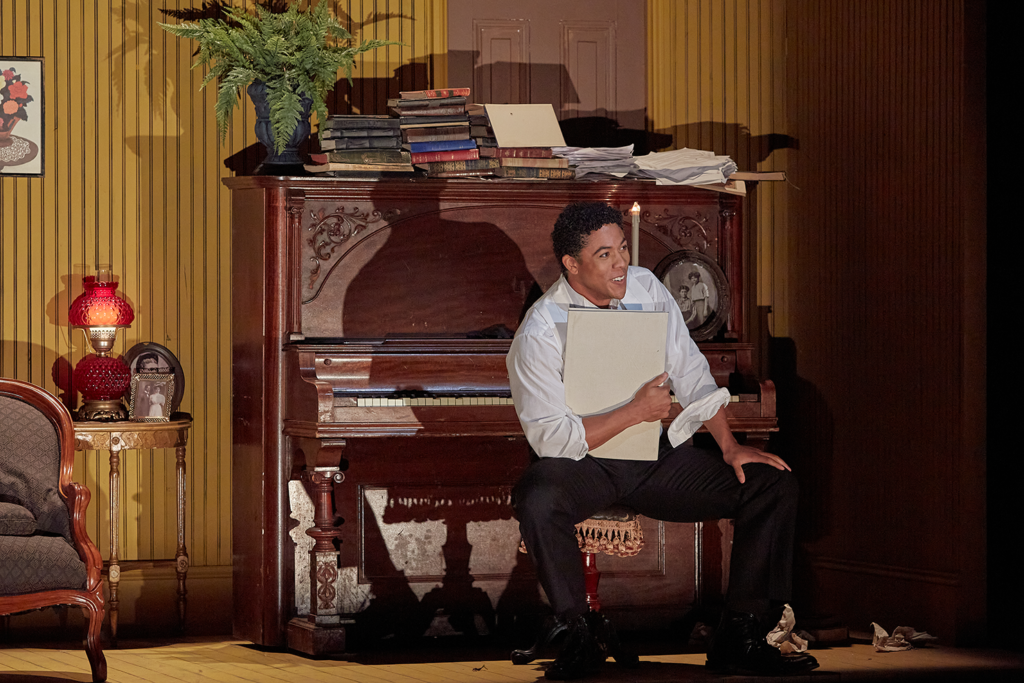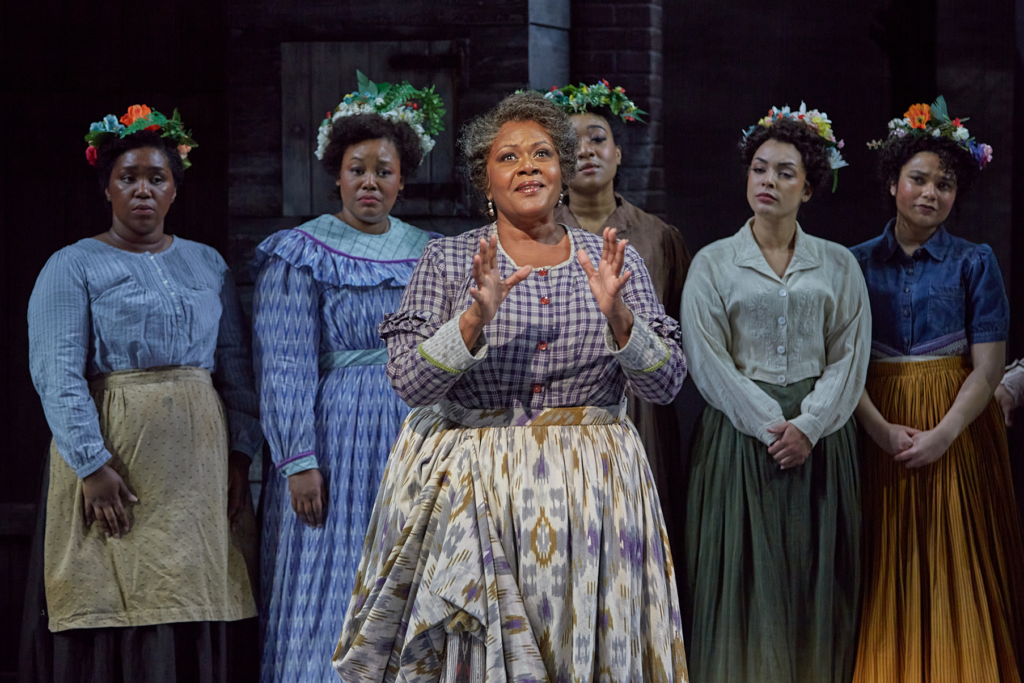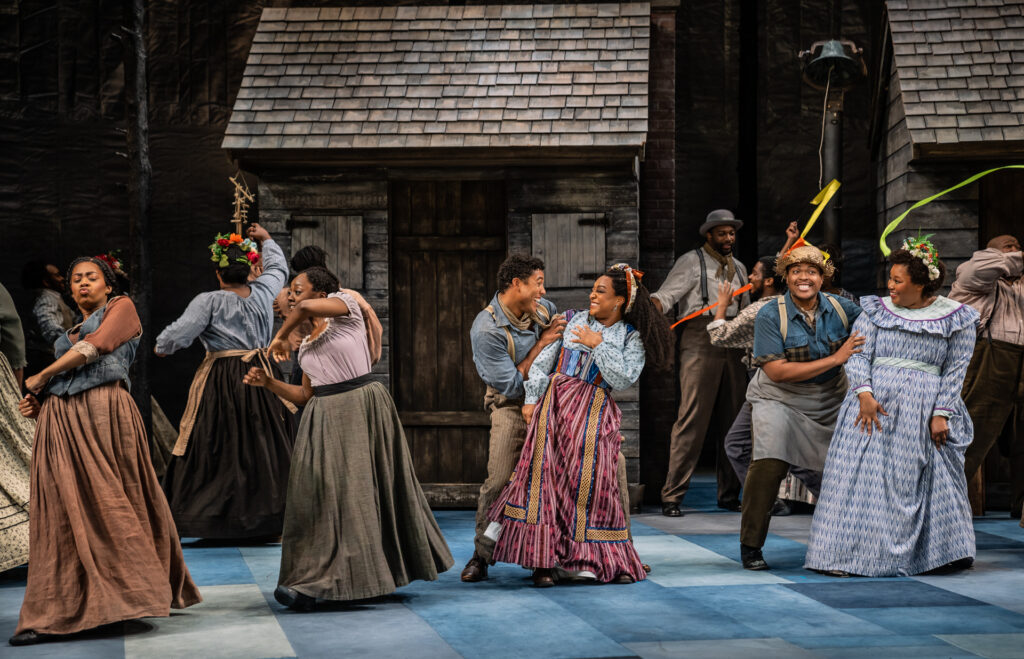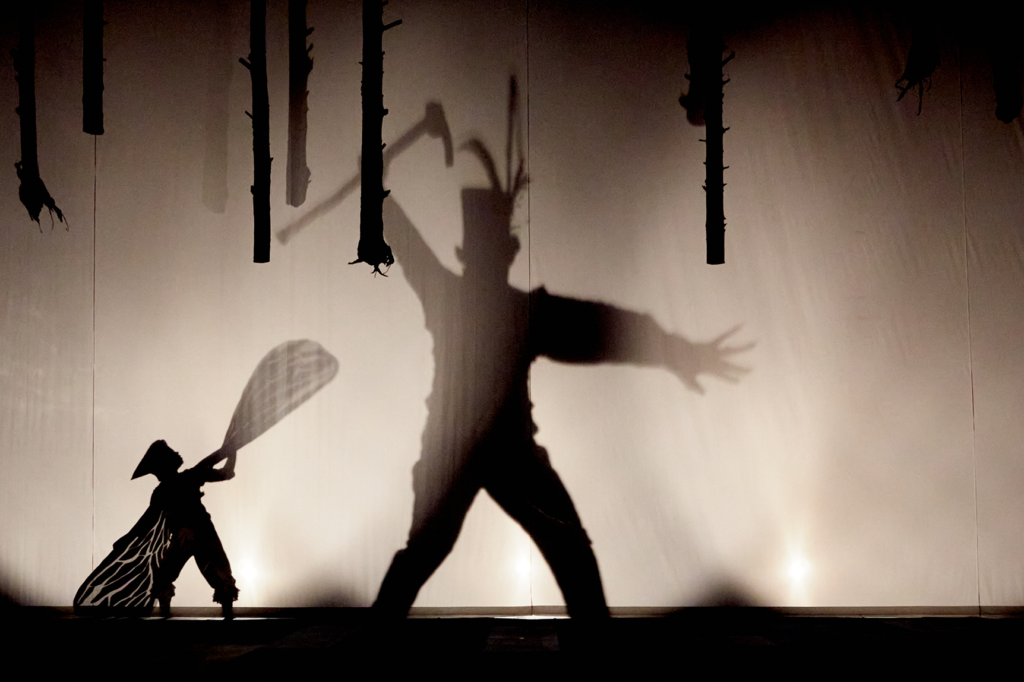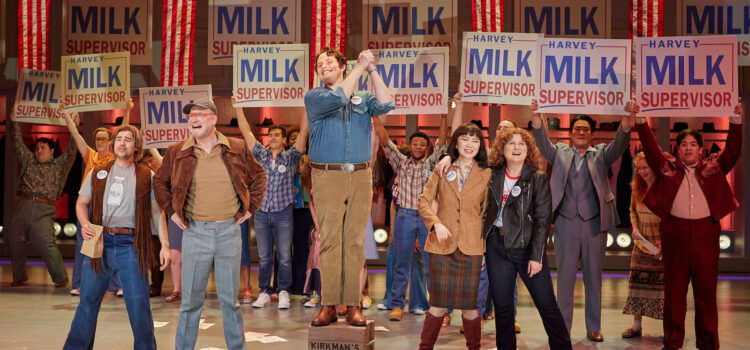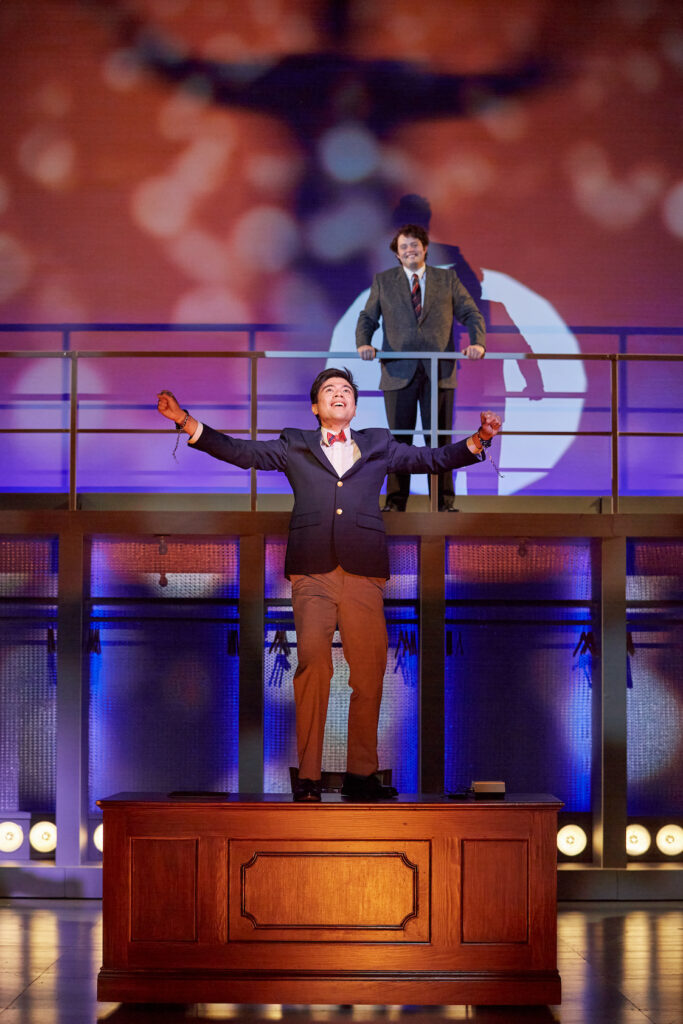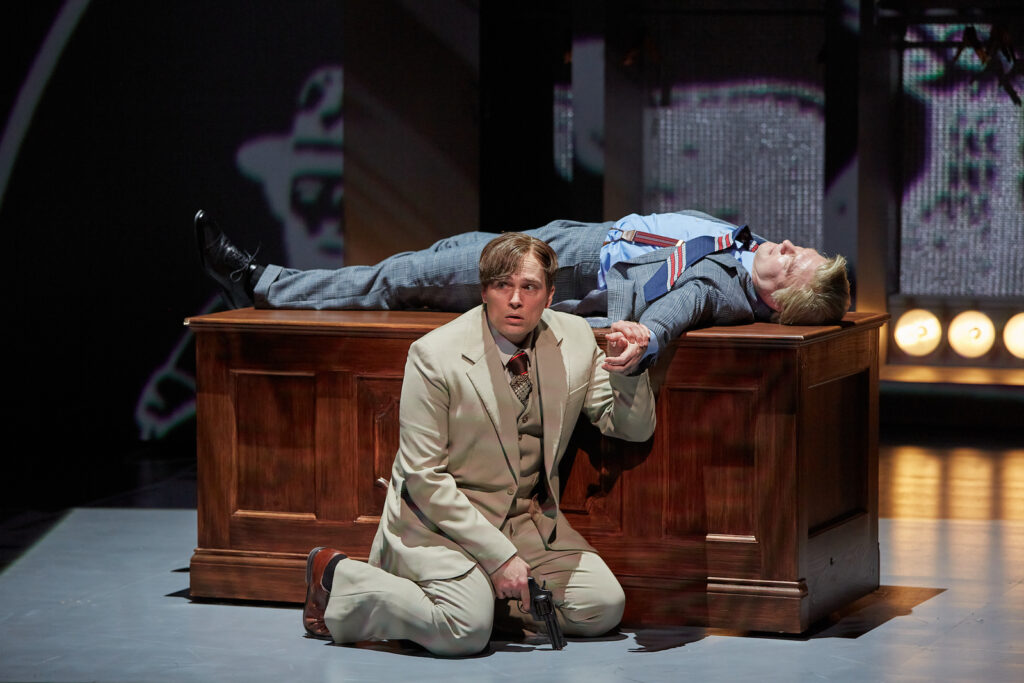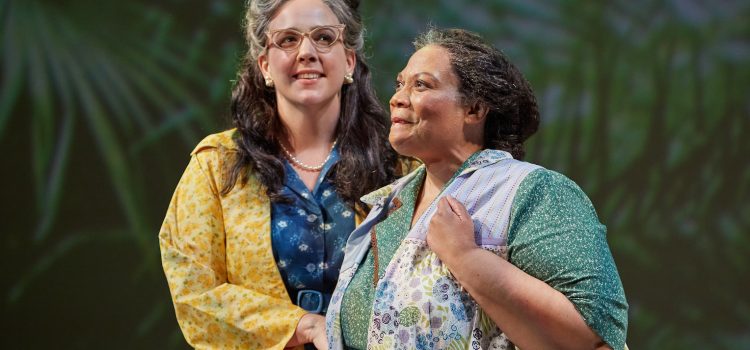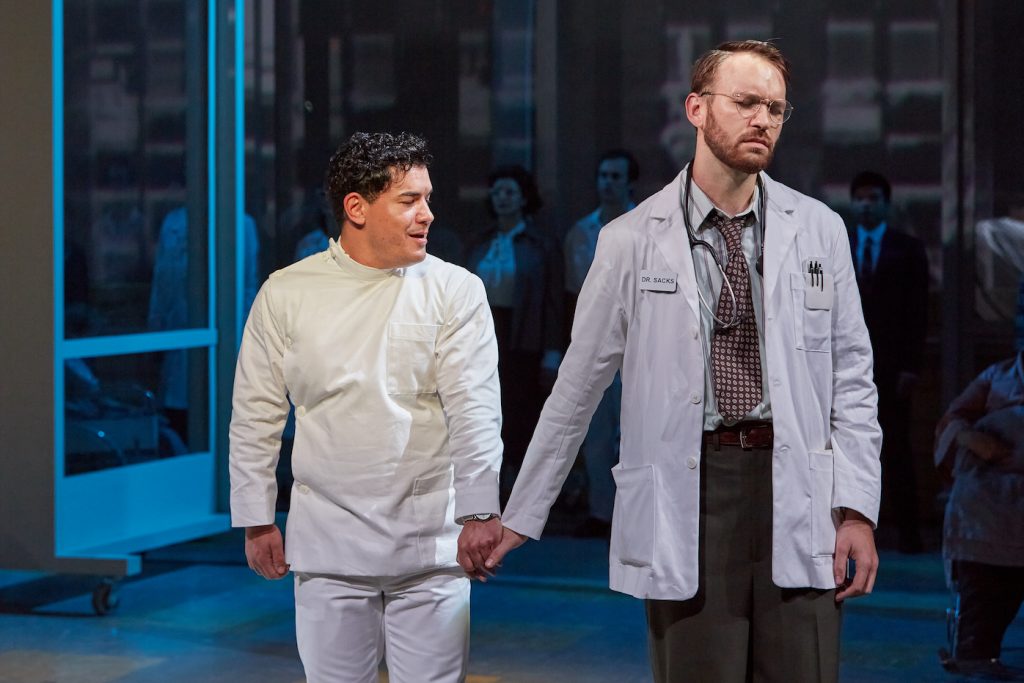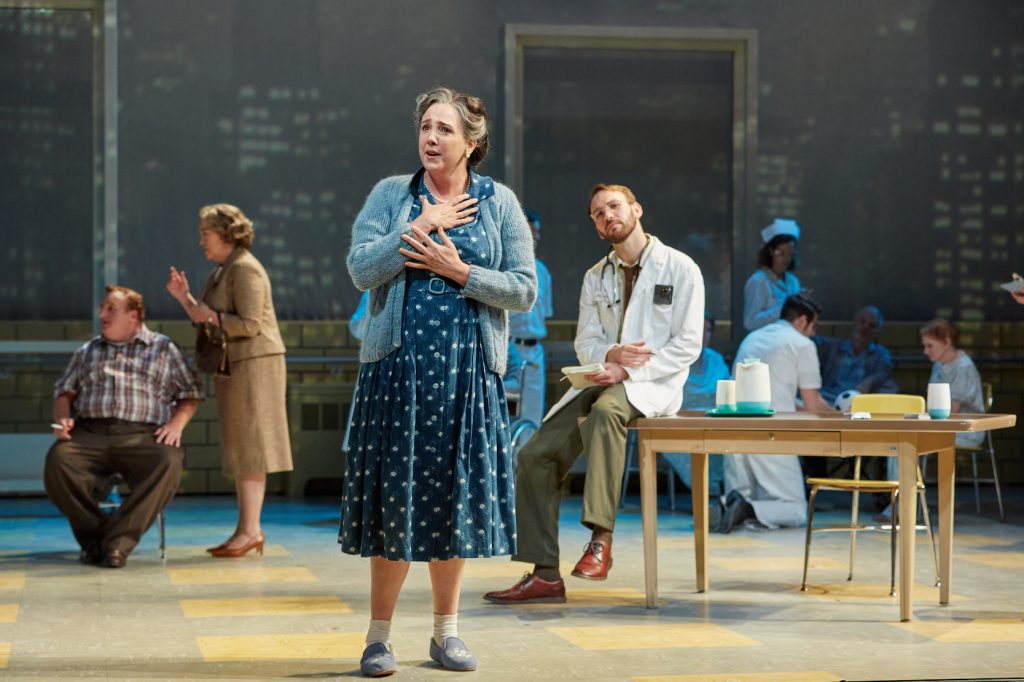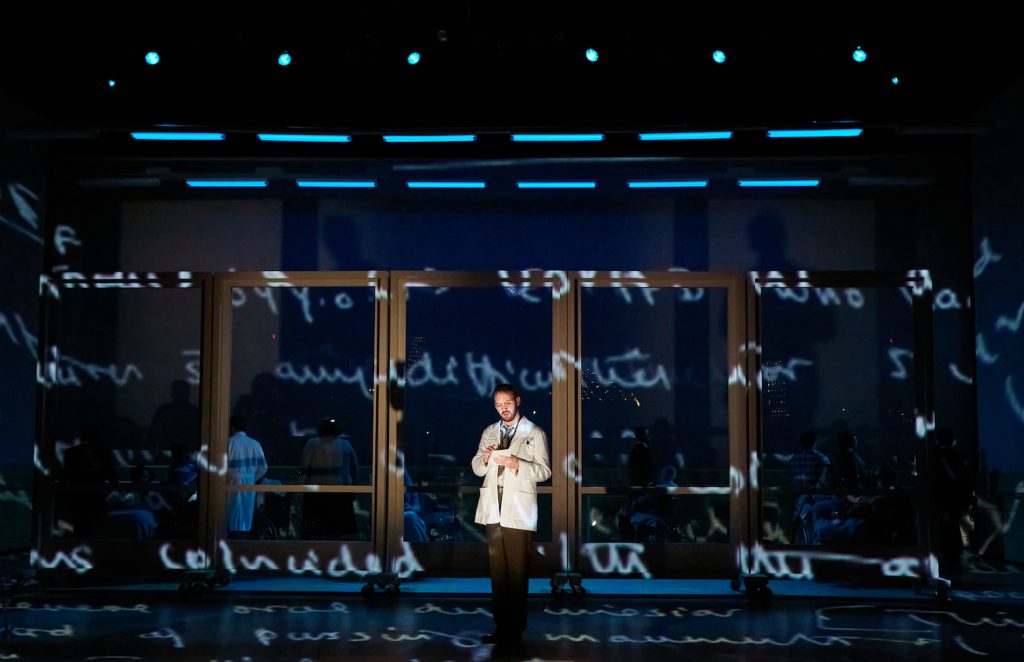By CB Adams
I won’t bury the lede: I wanted to like Opera Theatre of St. Louis’ production of “Galileo Galilei” more than I did. I had high expectations.
I appreciate the compositions of Phillip Glass, especially “Einstein on the Beach,” “Akhnaten” and the soundtrack to the documentary “Koyaanisqatsi.” I find mesmerizing (and hypnotic in the best way) his minimalist compositions, intricate structures and innovative fusion of classical and contemporary elements.
His talents (he wrote something like 25 operas), combined with Mary Zimmerman’s and Arnold Weinstein’s as co-librettists, as well as OTSL’s high artistic standards, set my expectation meter to high.
And yet, at the completion of the 90-minute performance (with no intermission), my first thought/best thought was “so close and yet so far.” Sort of like the way I imagine Galileo felt sometimes staring at the heavens through his rudimentary telescope – with the moon and stars appearing so close that he could – almost but not quite – touch them. A matter of reach versus grasp.
Is this a “bad” production? Of course not. Is this a “great” or even “good” production? The answer to that depends on how you define a fulfilling opera experience. If you like your opera narratives to didactically follow the highlights of a famous person’s life story (one act with 10 titled scenes in this case) with the dramatic depth of a History Channel documentary, then “Galileo Galilei” might be for you.
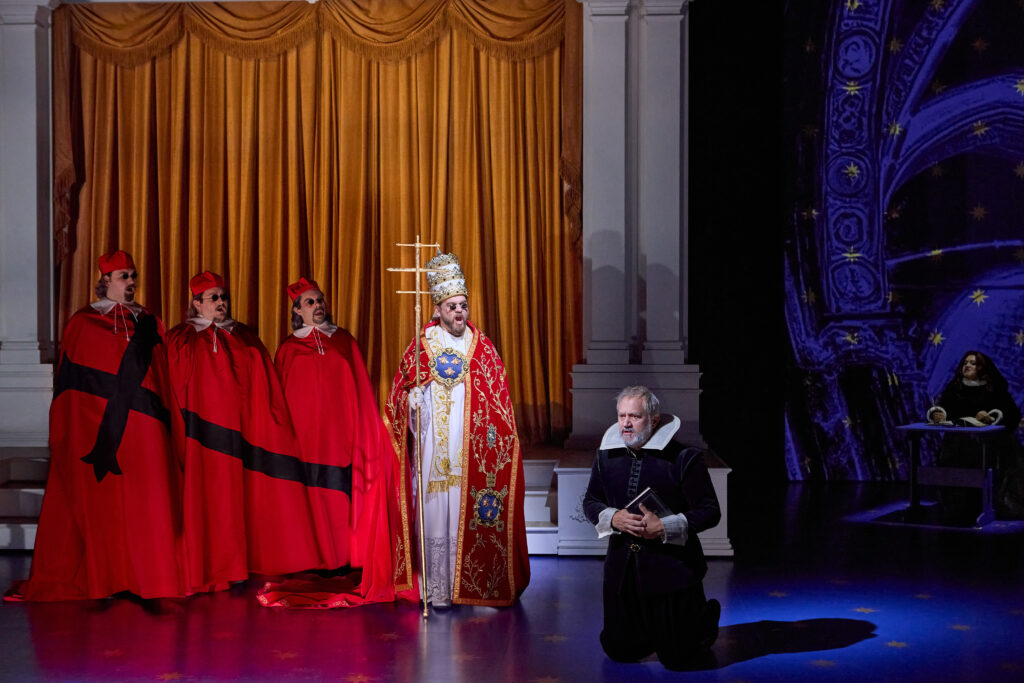
This episodic, highlight-reel depiction of Galileo’s complex relationship with the Catholic Church, his personal struggles and his enduring quest for scientific truth was like watching his travails through a remote telescope. As such, we can’t get below the surface to understand Galileo at a more meaningful, microscopic level. We get facts, not empathy.
However, the narrative structure itself was as intriguing as it was innovative. I don’t know of any other opera that presents its story backwards. That structure called to mind “The Curious Case of Benjamin Button” (the movie, not the short story by F. Scott Fitzgerald) and the novel “Time’s Arrow” by Martin Amis.
“Galileo Galilei” begins with the scientist as an old, blind, regretful man under house arrest, then follows his life in reverse order, and ends with him peering through a telescope as a hopeful boy. At the risk of being too literal and not allowing enough artistic license, that concluding scene was jarring because that telescope hadn’t yet been invented yet – by way of Hans Lippershey – so how could the boy be using one?
Yet, the tone of the final scene is impactful and lasting. History and time have proved Galileo right, and one would hope that today he would feel vindicated. As the great man himself once wrote, “The Bible shows the way to go to heaven, not the way the heavens go.”
And, there’s a certain irony in the fact that “the middle finger of his right hand—has been housed at various museums in Italy since at least the first half of the 1800s. The purloined vertebra ended up at the University of Padua, where Galileo taught from 1592 to 1610,” according to History.com.
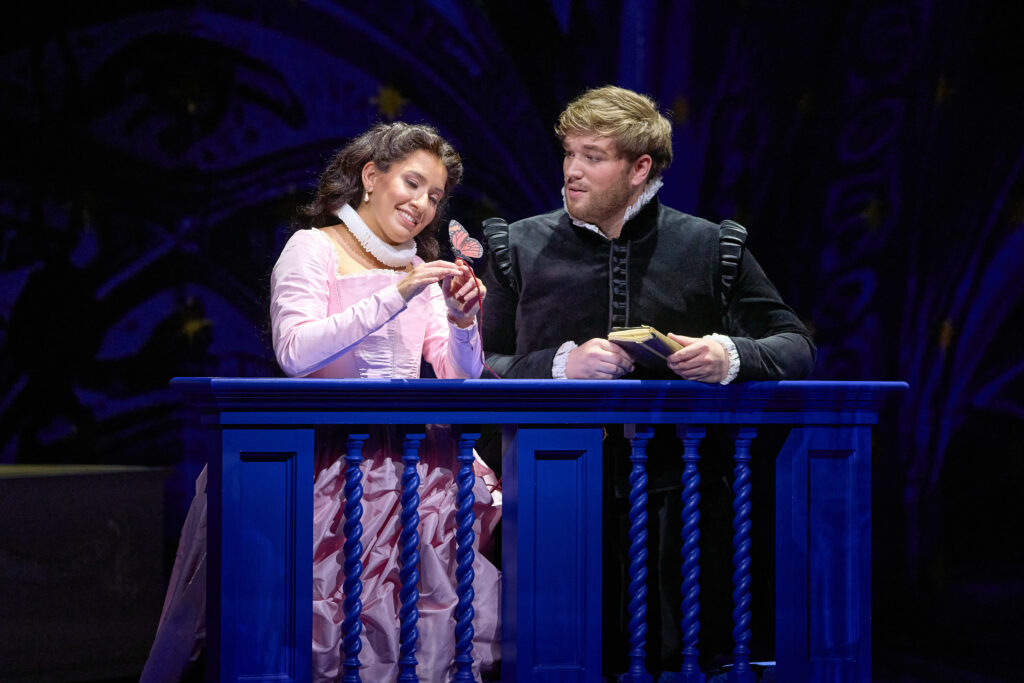
Portraying Galileo’s story in reverse is genius and puts the focus on hope rather than despair or tragedy. We see the hopeful beginning, not the seemingly defeated end. Amis in “Time’s Arrow” explores the storytelling potential of this approach. In the opening scene of “Galileo Galilei” there’s a resonance of Amis’ line, “We are prisoners of our own past, forever chasing the echoes of what has already happened.” And when exploring the themes of this opera, Glass, Zimmerman and Weinstein could very well have been thinking of Amis when he wrote “We understand time only in retrospect” and “Time is not linear, but a vast web of interconnected moments.”
Also praiseworthy is OTSL’s commitment to providing newer operas. Even if the sum of “Galileo Galilei” doesn’t synergistically exceed its individual parts, it’s a worthy experience to see how creatively and flexibly the opera form continues to be. I enjoy being exposed to all of the theatrical experiences provided by operas old and new – and everything in between.
Additionally, this opera is an interesting choice because it highlights – yet again – that science deniers have been around for a long, long time. To quote Amis again, “The present is the result of the past, and the foundation for the future.” Not exactly a reassuring or hopeful thought in this context. Revealing such prescience is definitely on the “plus side” of OTSL’s “Galileo Galilei.”
One playful sidenote to this production: in one scene (and the director’s notes) we learn that Galileo’s father, Vincenzo Galilei, was a founding member of the Florentine Camerata, which was responsible for the creation of the first operas in the final years of the Renaissance. It’s not often you leave an opera learning a factoid like that.
This production, under the stage direction of James Robinson (OTSL’s artistic director), is overtly, baroquely theatrical. At first glance, the staging appears inventive and dynamic as it attempts to breathe life into 17th century Italy. And with the quick pacing, that may be enough. But reflecting on the performance afterward, the staging deflects attention from the general lack of empathy for Galileo. There’s not time in this opera to feel deeply for him as a well-developed, multi-dimensional character. Don’t cry for me, Inquisition.
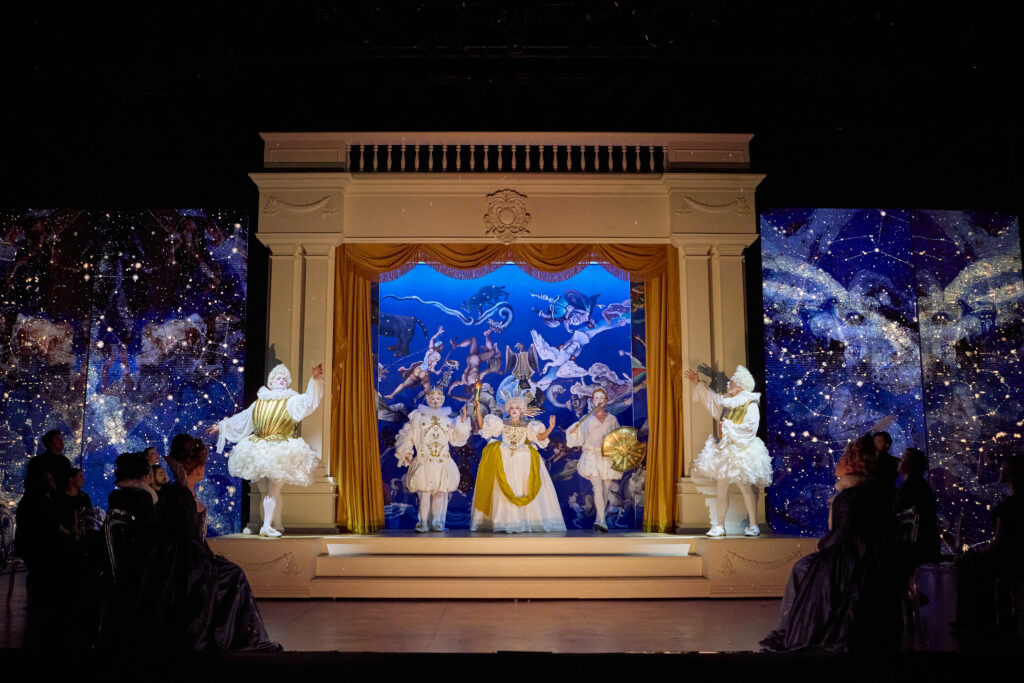
Another layer of this production’s theatricality are its costumes by Marco Piemontese. The costumes blend historical authenticity and artistic creativity to reflect the Renaissance era’s attire while incorporating modern elements that complement Glass’ minimalist score.
Piemontese’s meticulous attention to detail is generally impressive, but there are two off-putting characters whose white, puffy costumes beg for comparison to both Oompa Loompas from “Willy Wonka and the Chocolate Factory” and the Stay-Puft Marshmallow Man of “Ghostbusters” fame. Perhaps I just have an overactive associative visual mental library.
Allen Moyer’s choices for set the set design are praiseworthy for their inventiveness and clever support for the intricate choreography (provided by Sean Curran), crisp lighting (Eric Southern) and scene changes. His choices, including a compact proscenium arch that’s essentially a stage upon the stage, are also questionable for making the OTSL’s already modestly sized stage seem even smaller.
I can argue both sides of this choice. But the unsparing set made me yearn at times for the Lucca Christmas market scene in OTSL’s recent production of “La Boheme.”
The set’s small size keeps your attention well-focused on the elements of the opera, especially when the video projections by Greg Emetaz are presented. One of the highlights of this production is the amusing animation that “explains” Galileo’s “law of fall” about how gravity causes all objects, regardless of their mass, to fall at the same rate. Imagine how hard it would be to visually represent such a concept in an opera context.
Conversely, the small proscenium arch/stage can feel visually constricting, and the action can seem unrelenting. More than once, I felt anxious because I feared that if my eye wandered, I would miss something important. And that fear was not unwarranted.
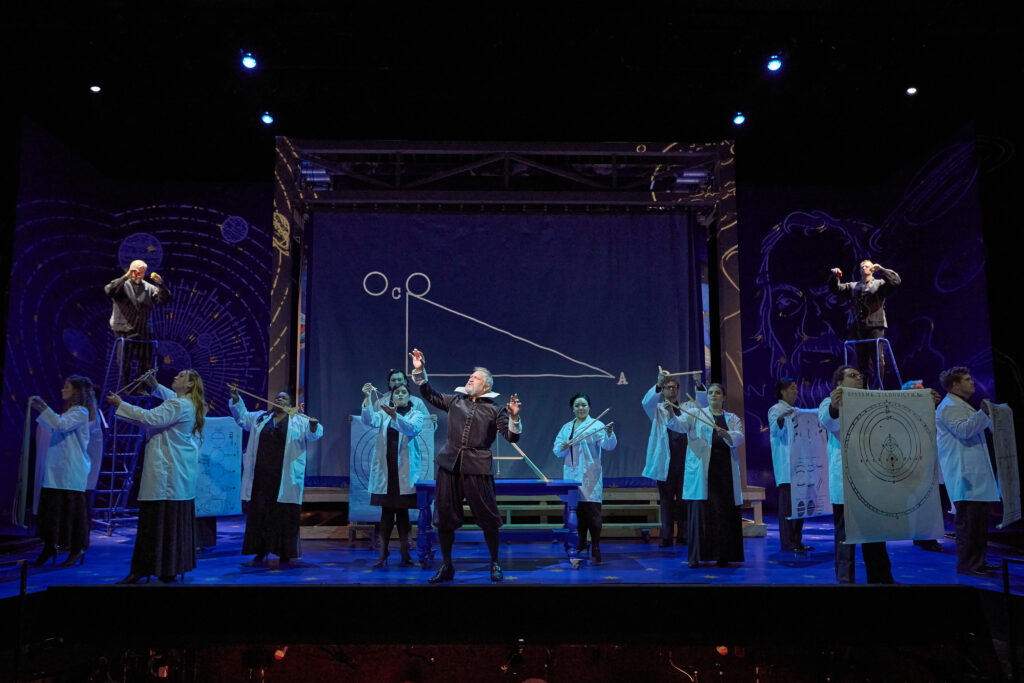
“Galileo Galilei” is mostly an ensemble performance (some in the cast sing multiple roles). There are four primary roles: Galileo (old and young), Maria Celeste (his devoted daughter) and the Cardinal Inquisitor. Collectively, These roles require a diverse range of vocal talents, from the introspective and reflective singing of the older Galileo to the youthful energy of the younger characters and the authoritative tones of the Inquisitor.
The ensemble in this production consistently delivers a rich tapestry of vocal expressions throughout the opera – or as much as they can wring from this libretto. There are no signature moments (or arias) in this opera, and thus no character, other than Galileo (either old or young) that really stand above the others.
As the older Galileo, tenor Paul Groves evenly delivers a nuanced portrayal of a man who reflects on his life and achievements with a mix of regret and pride. Sean Michael Plumb as the younger Galileo powerfully reveals his character’s early passion and curiosity, especially when interacting with other key figures.
Vanessa Becerra sings a very lovely Maria Celeste. Becerra’s controlled performance conveys Maria’s deep love and admiration for Galileo, especially during his trial by the Inquisition, as well as her internal conflicts and struggles with illness.
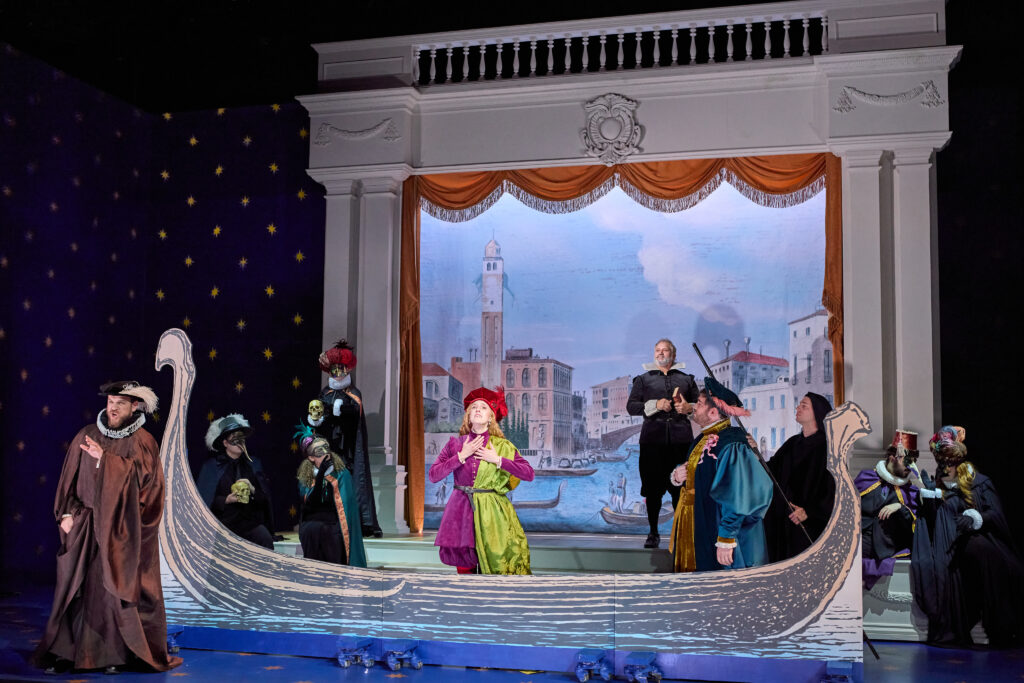
“Galileo Galilei” makes extensive use of a chorus that represents a range of characters from fellow scholars to members of the Church, supporters and skeptics. The chorus members often sing falsetto, ostensibly to emphasize the intellectual, philosophical or “otherworldly” aspects of the opera. This use of falsetto, through no fault of the singers, was more squirm-worthy, amorphous and cerebrally detracting than effective.
Glass was the primary draw for me with “Galileo Galilei.” Though not for everyone’s taste (and certainly not for those who prefer more traditional opera styles), his minimal style characterized by repetitive musical motifs, can be propulsive, emotional and poetic.
For those who are not Glass fans or who aren’t familiar with his style, this libretto might feel stagnant with overly repetitious themes and phrase. Musically, “Galileo Galilei” is a choose-your-own musical adventure.
“Galileo Galilei” is no “Akhnaten” or “Einstein On the Beach,” but it is not disappointing either, especially when as well played by the orchestra (with members of the St. Louis Symphony) and well directed Kwamé Ryan. There were many moments when I wished I could close my eyes and just listen to the score.
“Galileo Galilei’ is a mixed bag, but it’s still worth seeing. But keep some context in mind. This opera is best enjoyed as a cerebral and intellectual exercise rather than an emotional or cathartic experience. With a short run time and quick scenes (comparatively), effective use of multimedia, solid singing and costumes rivaling those at the Met Gala, this is an interesting quarter of the OTSL’s four-part festival.
“Galileo Galilei” is part of Opera Theatre of St. Louis 2024 repertory season continuing through June 29 at the Loretto-Hilton Center on the Webster University campus. For tickets or more information visit www.opera-stl.org.
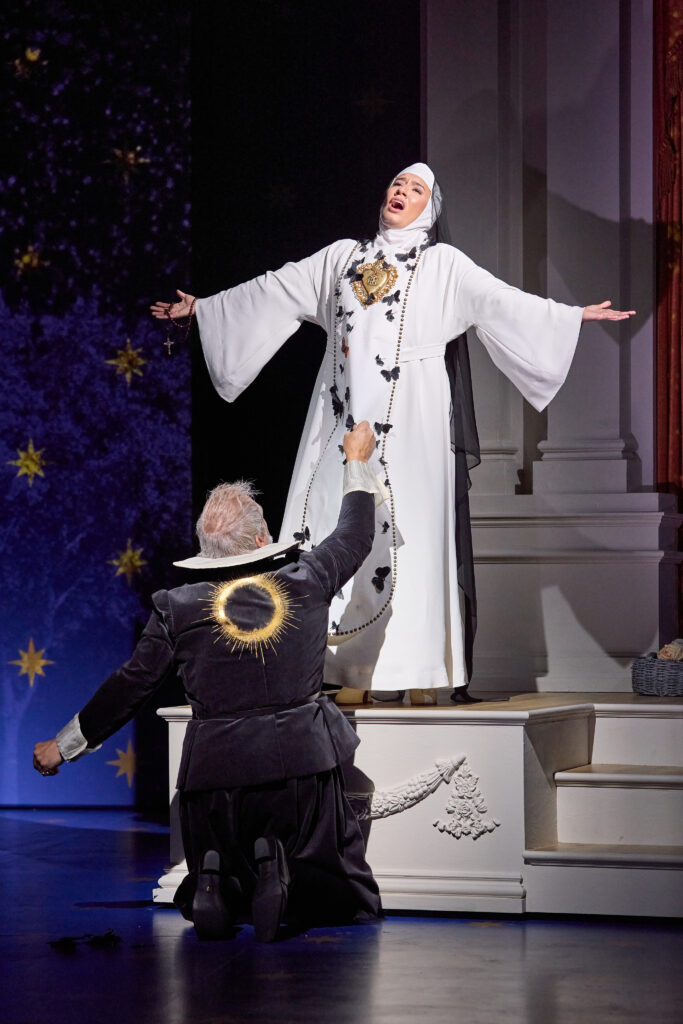
Cover photo: L to R: Kathleen O’Mara as Duchess Christina, Lucie Evans as Marie de Medici, Sean Michael Plumb as Younger Galileo, and Michelle Mariposa as Maria Maddalena in Philip Glass’ “Galileo Galilei.” Photo © Eric Woolsey

CB Adams is an award-winning fiction writer and photographer based in the Greater St. Louis area. A former music/arts editor and feature writer for the St. Louis Globe-Democrat, his non-fiction has been published in local, regional and national publications. His literary short stories have been published in more than a dozen literary journals and his fine art photography has been exhibited in more than 40 galley shows nationwide. Adams is the recipient of the Missouri Arts Council’s highest writing awards: the Writers’ Biennial and Missouri Writing!. The Riverfront Times named him, “St. Louis’ Most Under-Appreciated Writer” in 1996.

